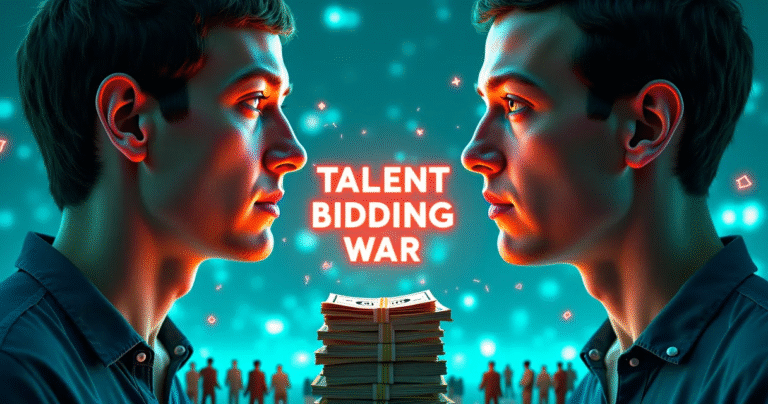OpenAI ChatGPT Pro: Financial Insights
Key financial developments and future projections for OpenAI’s ChatGPT Pro service
Unexpected Losses
ChatGPT Pro’s $200/month plan is currently operating at a loss due to higher-than-anticipated usage rates.
Projected Deficit
Despite $20B in funding, OpenAI anticipates a $5B loss in 2024, highlighting significant financial challenges.
Operating Costs
Daily operational costs of $700,000 for ChatGPT currently exceed subscription revenue streams.
Pricing Strategy
Plans to implement higher subscription rates and usage-based pricing to improve financial stability.
Future Goals
Ambitious target of $100B revenue by 2029, with $11.6B projected for 2025.
OpenAI, the powerhouse behind ChatGPT, has recently launched its premium ChatGPT Pro subscription, priced at $200 per month. While this might seem like a hefty price tag, it appears even that isn't enough to make the service profitable. In a surprising admission, CEO Sam Altman recently revealed that the company is currently losing money on ChatGPT Pro due to unexpectedly high usage, highlighting the complex economics of running cutting-edge AI models like the o1 model. This situation raises questions about the sustainability of their pricing model and the future of AI service profitability. Let's explore why even a $200 price point isn't making ends meet for OpenAI.
The Popularity Paradox: How High Demand Hurts Profitability
One of the primary reasons for this unexpected financial hurdle is the sheer popularity of ChatGPT Pro. Altman himself acknowledged that "people use it much more than we expected," which strains the company's resources and drives up costs. This is somewhat counterintuitive; one might assume that more users translates to more profit. However, with AI models, the cost of each query, especially for complex tasks requiring significant computational power, adds up. This is especially true for the advanced o1 model offered in the Pro tier, which employs a chain-of-thought approach that consumes more resources per interaction. Essentially, the more people use the advanced features of ChatGPT Pro, the more it costs OpenAI to operate, leading to current losses even at a premium price.
The Cost of Reasoning: Why o1 Models are Expensive

ChatGPT Pro boasts access to OpenAI's advanced o1 "reasoning" model. Unlike previous models, the o1 model utilizes a "chain of thought" approach, breaking down complex problems into smaller steps before arriving at a final answer. While this yields more accurate and nuanced results, it also requires significantly more computational power and time. This increased processing time translates directly into higher GPU usage and therefore higher operating costs for OpenAI. The process is computationally intensive, leading to increased token generation which requires more time on their hardware, thus contributing to significant operational expenses.
A Deep Dive into OpenAI's Financial Reality
OpenAI’s financial situation is more complex than just the performance of ChatGPT Pro. Despite raising billions of dollars, they have yet to turn a profit. Reports indicate that OpenAI lost approximately $5 billion in the last year, with a revenue of $3.7 billion. This massive loss underscores the financial challenges of developing and maintaining AI systems. Several factors contribute to this situation, including:
- High Compute Costs: Training large language models and running inference requires enormous computing resources, leading to significant cloud service expenses with providers like Microsoft Azure. 💡
- Infrastructure Investments: Setting up and maintaining data centers capable of handling intensive AI workloads is incredibly expensive.
- Staff and Operations: Hiring top-tier AI talent and managing the operations of such a complex organization are a significant drain on resources.
| Expense Category | Description | Impact on Profitability |
|---|---|---|
| Model Training | Initial cost to train AI models, requiring substantial time and resources. | High |
| Inference (Usage) | Cost per query due to server usage and electricity, especially for advanced models like o1. | High |
| Infrastructure Maintenance | Cost of data centers, GPUs, servers and necessary power requirements. | High |
| Personnel | Salaries of highly skilled engineers, researchers, and other staff. | Moderate |
| Overhead | Day-to-day costs associated with office spaces, research equipment and marketing. | Moderate |
Expert Opinions and Industry Insights
The situation at OpenAI has prompted industry experts to weigh in. Some analysts believe that OpenAI may be caught in a bind. The company is pushing the boundaries of AI capabilities but the financial implications are proving difficult to manage. Others have suggested that while the $200 price point for ChatGPT Pro might seem high to consumers, it might not be high enough to cover the incredibly expensive computational costs and related infrastructure expenses. Some have pointed out that unlike traditional software, where costs are primarily front-loaded, each query to an AI model carries its own expense in computing resources. This means scaling the user base doesn't necessarily translate directly to proportional increases in revenue, as each additional user adds further computing costs.
Navigating the Path to Profitability: What's Next for OpenAI?
OpenAI is now considering several options to address its financial struggles and steer towards profitability. Some of these options include:
- Price Hikes: Raising the price of ChatGPT Pro or other subscription plans is one option, but this carries the risk of alienating users and potentially causing them to switch to competing services. ⛔️
- Corporate Restructuring: Exploring a restructuring to attract new investors may provide additional capital to offset losses. 📌
- Optimizing AI Models: Focusing on making their models more efficient, thus reducing the computational cost per query. ✅
- Diversifying Revenue Streams: Exploring business solutions and expanding API access.
- Improving Infrastructure Efficiency: Investing in more cost-effective hardware and infrastructure that minimizes operational expenditure.
OpenAI is reportedly exploring new ways to optimize its AI model training and deployment. For instance, optimizing the o1 model to minimize token generation without sacrificing reasoning quality could lower costs significantly.
Where is This Headed? The Evolving AI Pricing Landscape
The challenges faced by OpenAI with ChatGPT Pro highlight the evolving landscape of AI pricing. Traditional software models may not apply, and companies are grappling with finding the right balance between offering advanced features and managing operating costs. It’s clear that the future pricing models for AI services will need to be dynamic and consider the fluctuating costs of computation, infrastructure and model refinement. We may see more nuanced pricing tiers based on usage patterns, model complexity, and access levels.
Is the Popularity of ChatGPT Pro Impacting OpenAI’s Profitability as a Serious Rival to Google?
The rise of ChatGPT Pro has intensified the chatgpt search rivalry, challenging Google’s traditional dominance in online search. As users gravitate towards conversational AI for information retrieval, OpenAI’s profitability could see significant growth, forcing Google to adapt its strategies to maintain market leadership in an evolving digital landscape.
Looking Ahead: Can OpenAI Rebalance Cost and Value?
The situation with ChatGPT Pro is a fascinating case study in the complexities of running a large-scale AI service. While the $200 price tag might seem exorbitant, it underscores the reality of the high costs associated with cutting-edge AI technology. OpenAI's journey towards profitability will be a crucial test for the AI industry, and it will likely require a combination of innovative strategies and a deeper understanding of the unique economic factors at play. The company's commitment to improving efficiency and exploring diverse revenue streams suggests a proactive approach to addressing these challenges. As they refine their pricing strategy and technological capabilities, the future of OpenAI and the broader AI service industry will undoubtedly be shaped by the lessons learned from this crucial period. For the latest details on pricing, visit the official OpenAI pricing page.
OpenAI ChatGPT Pro: Financial Metrics & Usage Statistics (2024-2025)
Visualization shows the contrast between OpenAI’s revenue generation and operational costs, highlighting the challenges of scaling AI services profitably.







